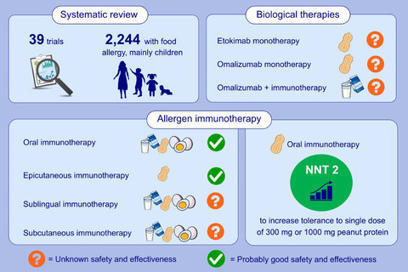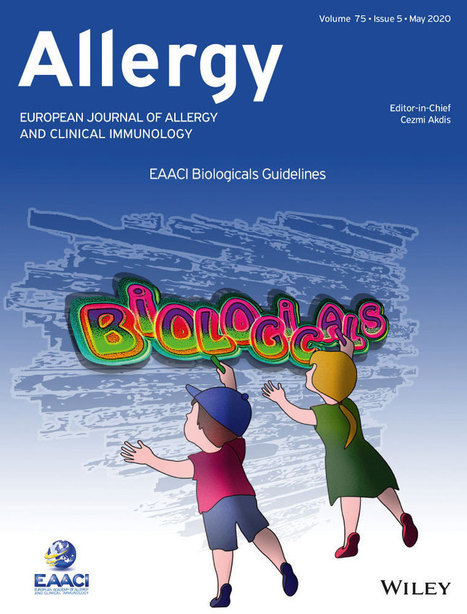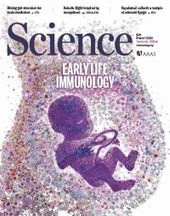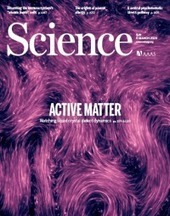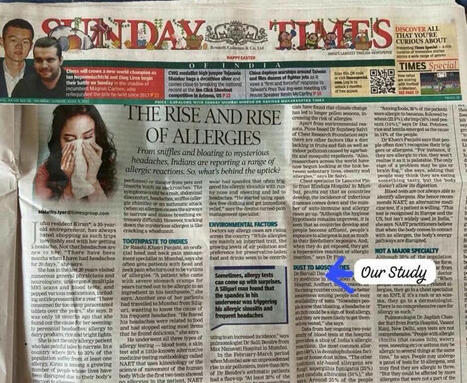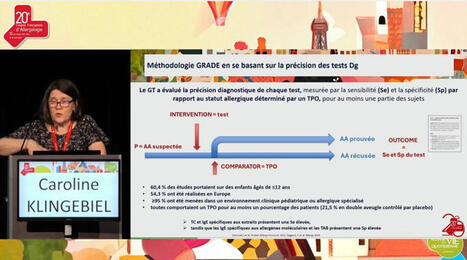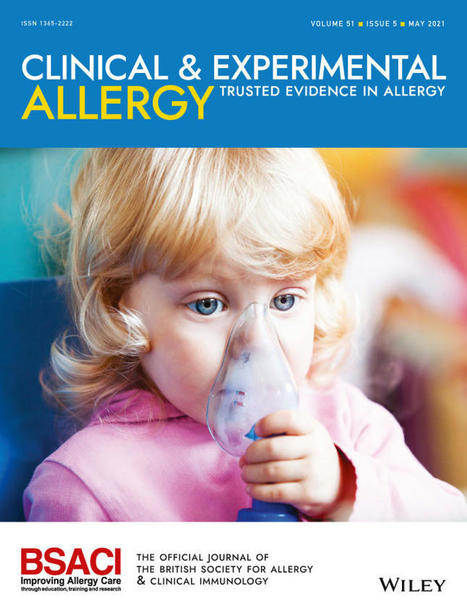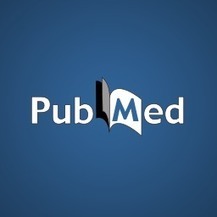 Your new post is loading...
 Your new post is loading...

|
Scooped by
Gilbert C FAURE
October 2, 2:42 AM
|
✨✨✨ Nous sommes très heureux d’annoncer la publication des résultats de #AllergenChipChallenge dans la prestigieuse revue Journal of Allergy and Clinical Immunology https://lnkd.in/e_Mn4c73
Ce projet est le fruit d’un travail collectif remarquable, qui a rassemblé cliniciens, biologistes, data scientists et chercheurs autour d’un objectif commun : mieux comprendre et interpréter les données issues des puces à allergènes et de générer par #MachineLearning un #algorithme de prédiction des #allergies à partir d'un profil d'IgE et de données cliniques.
La base de données et l'algorithme sont en libre accès au bénéfice de la recherche et des patients allergiques.
Un grand merci 🙏 à Joana Vitte et Pascal Demoly pour avoir initié ce passionnant projet, la Société Française d'Allergologie - SFA, AllergoBioNet, Health Data Hub et Bpifrance pour leur soutien déterminant, ainsi qu’à toutes celles et ceux qui ont contribué à rendre cette aventure possible Guillaume Martinroche Amir Guemari Pol André APOIL Isabella Annesi-Maesano Eric Fromentin @Laurent Guilleminault Davide Caimmi Caroline Klingebiel @Céline Beauvillain Alain Didier Jeremy Corriger Lauriane Armand Agathe Delaune Trustii.io Naama BAK CHU de Bordeaux.
➡️ Ces avancées montrent la puissance de la collaboration et de l’ouverture des données pour faire progresser la recherche en allergologie et au-delà. Le projet continue.
#OpenData #Database #Allergie #Allergologie #Allergy #Immunologie #Recherche #IA #MachineLearning #SFA #GTESIA

|
Scooped by
Gilbert C FAURE
July 19, 8:06 AM
|

|
Scooped by
Gilbert C FAURE
July 7, 5:48 AM
|
🔬 Et si on arrêtait de réduire les mastocytes à l’IgE ?
Pendant des décennies, la triade « mastocyte - IgE - allergie » a structuré notre compréhension des réactions d’hypersensibilité immédiate.
Mais aujourd’hui, nous savons que cette vision est incomplète.
📌 L’article-clé paru en janvier 2025 (Int J Mol Sci. 26(3):927) montre que les mastocytes (MC) disposent d’un répertoire de récepteurs bien plus vaste que FcεRI, et que leur activation peut suivre des voies non-IgE, dites "pseudoallergiques", via des récepteurs comme MRGPRX2.
💥 Résultat ?
➡️ Des réactions cliniques rapides, sans sensibilisation préalable ni IgE spécifique détectable.
➡️ Une dégranulation induite par des médicaments (fluoroquinolones, vancomycine, morphine...), des neuropeptides (substance P), ou des stimuli physiques.
➡️ Une inflammation neurogène amplifiée par l’interaction étroite entre MC et terminaisons nerveuses périphériques.
🧠 Les implications dépassent largement le champ allergologique classique :
- Urticaire chronique, dermatite atopique, prurit rebelle
- Syndrome d’activation mastocytaire (MCAS)
- Rosacée, asthme non contrôlé, inflammation cérébrale...
💡Comprendre MRGPRX2, c’est élargir notre cadre diagnostique et thérapeutique.
👉 De nouveaux traitements ciblent déjà cette voie : antagonistes de MRGPRX2, cannabinoïdes non-psychoactifs (PEA, CBD), anticorps anti-Siglec-8...
🧬 Les mastocytes sont bien plus que des effecteurs allergiques.
Ils sont au carrefour de l’immunité, du système nerveux et des interfaces barrière.
Et si l’on actualisait nos réflexes cliniques ?
Source : https://lnkd.in/etTeyKBh
Dr Lucie WETCHOKO

|
Scooped by
Gilbert C FAURE
October 16, 2024 10:11 AM
|
Comparable production of IL-4 by both TFR and TFH cells. A helper role for TFR cells in food allergy was previously demonstrated with the use of TFR cell–deficient Foxp3CreBcl6fl/fl (Bcl6FC) mice (18).

|
Scooped by
Gilbert C FAURE
April 18, 2023 12:06 PM
|
Basophils bind IgE via FceRI-alpha beta gamma 2, which they uniquely share only with mast cells. In doing so, they can rapidly release mediators that are hallmark of allergic disease. This fundamental similarity, along with some morphological features shared by the two cell types, has long brought into question the biological significance that basophils mediate beyond that of mast cells. Unlike mast cells, which mature and reside in tissues, basophils are released into circulation from the bone marrow (constituting 1% of leukocytes), only to infiltrate tissues under specific inflammatory conditions. Evidence is emerging that basophils mediate non-redundant roles in allergic disease and, unsuspectingly, are implicated in a variety of other pathologies [e.g., myocardial infarction, autoimmunity, chronic obstructive pulmonary disease, fibrosis, cancer, etc.]. Recent findings strengthen the notion that these cells mediate protection from parasitic infections, whereas related studies implicate basophils promoting wound healing. Central to these functions is the substantial evidence that human and mouse basophils are increasingly implicated as important sources of IL-4 and IL-13. Nonetheless, much remains unclear regarding the role of basophils in pathology vs. homeostasis. In this review, we discuss the dichotomous (protective and/or harmful) roles of basophils in a wide spectrum of non-allergic disorders.

|
Scooped by
Gilbert C FAURE
October 12, 2022 10:44 AM
|
In this study, researchers identified significant practice variations in management & diagnosis of FPIAP among pediatric gastroenterologists and immunologists.

|
Scooped by
Gilbert C FAURE
February 1, 2022 5:28 AM
|
We systematically reviewed 39 randomized controlled trials about allergen-specific immunotherapy and/or biologicals in 2244 people with IgE-mediated food allergy, mostly children. We found that ora

|
Scooped by
Gilbert C FAURE
July 12, 2021 1:38 PM
|
The first molecular structures of allergens were identified more than 30 years ago, and characterised recombinant allergens became available. We evaluate the current state of the art in molecular AIT with the purpose of understanding why progress in this field has been modest, despite the fact that there is enormous promise for treatment and allergen-specific prevention. Several AIT techniques have been developed and are being tested in clinical trials based on allergen structures. In clinical AIT trials, promising results were obtained with recombinant and synthetic allergen derivatives inducing allergen-specific IgG antibodies, which interfered with allergen recognition by IgE, whereas clinical efficacy for approaches targeting only allergen-specific T-cell responses could not yet be demonstrated. According to the available research, molecular AIT techniques have significant advantages over allergen extract-based AIT. Clinical trials show that recombinant allergen-based AIT vaccines that outperform existing allergen extract-based AIT vaccines for respiratory, food, and venom allergy can be created. Allergen-specific preventative techniques based on recombinant allergen-based vaccine methods and T-cell tolerance induction are on the horizon and hold the promise of allergy prevention. However, progress is hampered by a shortage of resources for clinical trials, which are required for the development of these novel therapies. For latest news and updates By signing up, you will receive emails about Physician's Weekly products and you agree to our Terms & Conditions and Privacy Policy. Reference: https://journals.lww.com/co-allergy/Fulltext/2019/08000/Recombinant_allergens_for_immunotherapy__state_of.20.aspx

|
Scooped by
Gilbert C FAURE
December 13, 2020 2:17 PM
|
The term anaphylaxis refers to a systemic immediate hypersensitivity reaction caused
by the rapid, IgE-mediated immune release of potent mediators from tissue mast cells
and peripheral blood basophils.

|
Scooped by
Gilbert C FAURE
September 16, 2020 1:30 AM
|
Alpha-gal Syndrome (AGS) is a unique allergy to non-primate mammalian meat (and derived-products) that is associated with tick bites and is due to a specific IgE antibody to the oligosaccharide gal...

|
Scooped by
Gilbert C FAURE
May 24, 2020 11:57 AM
|
Abstract Background A few studies have investigated the antecedents and outcomes of infants who demonstrate IgE sensitization to foods that they clinically tolerate. Improved understanding of this ...

|
Scooped by
Gilbert C FAURE
May 9, 2020 4:43 AM
|

|
Scooped by
Gilbert C FAURE
March 5, 2020 3:19 PM
|
|

|
Scooped by
Gilbert C FAURE
August 7, 3:35 AM
|
"A blog about allergy, asthma & immunology"

|
Scooped by
Gilbert C FAURE
July 8, 8:34 AM
|
8th July is World Allergy Day.
This article in Times Of India mentioned about our old study: Allergic diseases have significant impact on the quality-of-life, social life, and economy. Inadequate knowledge about allergic testing further add on to the burden of the disease. Reposting this for awareness about harmonisation of allergens testing.
The clinical suspicion of allergic sensitization can be confirmed by demonstrating the presence of allergen specific immunoglobulin-E (IgE) antibodies in vivo (skin prick test) or in vitro methods (Blood tests: FEIA, ELISA, CRD etc). There is a lack of well-defined protocols and guidelines for the diagnosis of respiratory allergy testing in India. Therefore, the evidence-based guidelines is the need of the hour.

|
Scooped by
Gilbert C FAURE
June 12, 11:14 AM
|
On behalf of the Allergy Diagnosis Working Group Of the French Society of Allergology (GTBA – SFA), I’m proud to have contributed to the dissemination of the EAACI guidelines on the diagnosis of IgE-mediated Food Allergy within the French-speaking medical community:
- French translation of the food allergy guidelines on diagnosis for a special issue of the French Allergy Journal (RFA) dedicated to Food Allergy: https://lnkd.in/dBAxRQXC
- Plenary presentation at the French National Congress of Allergology (CFA 2025) in Paris with a focus on methodology based on the accuracy of diagnostic tests to understand the recommended diagnostic approach: https://lnkd.in/dGAEc7PK
- Presentation at a workshop/controversy at the 30th National Congress of AMAFORCAL in Rabat, Morocco
Julien Goret, Joana Vitte, Alexandra Santos, MD PhD, Société Française d'Allergologie - SFA, European Academy of Allergy and Clinical Immunology - EAACI, @GTBA, Youness EL GUEDDARI, Elleni-Sofia Vaia

|
Scooped by
Gilbert C FAURE
September 8, 2024 11:47 AM
|

|
Scooped by
Gilbert C FAURE
March 9, 2023 7:53 AM
|
Un consortium international (*), comprenant le laboratoire de génétique humaine des maladies infectieuses, à l’Institut Imagine (Inserm, APHP, Université Paris Cité), vient de publier une nouvelle étude dans la revue Journal of Experimental Medicine. Les médecins et chercheurs ont identifié un nouveau gène en cause dans le syndrome « hyper IgE », responsable d’allergies et d’eczéma sévères.

|
Scooped by
Gilbert C FAURE
July 25, 2022 8:38 AM
|
All shrimp oral challenge test (OCT)-positive patients were positive for IgE against Der p 10.The level of anti-Der p 10 IgE >1.2 kUA/mL had the best diagnostic performance (sensitivity 100%, specificity 65%) Conclusion: Anti-Der p 10 IgE is useful for predicting shrimp allergy diagnosis and cou ...

|
Scooped by
Gilbert C FAURE
December 27, 2021 10:47 AM
|
The introduction of novel food products could expose the population to new dietary proteins. Assessing the potential allergenicity of these proteins is essential to their safe introduction, but remains a challenge.The activity is focusing on establishing the way different types of methodologies can be deployed to achieve a quantitative or semi-quantitative assessment of the risk posed by protein sources. The recently developed Adverse Outcome Pathway for IgE-mediated sensitisation in particular, is considered.

|
Scooped by
Gilbert C FAURE
May 24, 2021 11:20 AM
|
Abstract Background Atopic diseases are an increasing problem that involve both immediate hypersensitivity reactions mediated by IgE and unique cellular inflammation. Many forms of specific immunot...

|
Scooped by
Gilbert C FAURE
December 13, 2020 2:17 PM
|
Our study suggests that the mast cell activation test can be used to diagnose IgE/FcεRI-dependent immediate drug hypersensitivity reactions.It also shows potential to assess the clinical relevance of drug-specific IgE antibodies in their ability to elicit mast cell degranulation, and therefore disc...

|
Scooped by
Gilbert C FAURE
September 12, 2020 4:20 AM
|
Morning Session Morning Chair: Dr Tom Marrs 09:00 Welcome and Introduction Dr Tom Marrs Consultant in Paediatric Allergy St Thomas' Hospital, London 09:10 Remote managment of eczema and urticaria in primary care Dr Alya Abdul-Wahab Consultant Dermatologist St George's Hospital, London 09:50 How to fix common gastro-intestinal symptoms in children Dr Rakesh Vora Paediatric Gastroenterology Consultant St Thomas' Hospital, London 10:35 << BREAK >> 11:00 How to manage IgE and non-IgE food allergies Dr Tom Marrs Consultant in Paediatric Allergy St Thomas' Hospital, London 11:40 How to recomment avoidance of egg and nuts Rebecca Brocklehurst Paediatric Allergy Dietitian St Thomas' Hospital, London 12:20 << LUNCH >> Afternoon Session Afternoon Chair: Dr Rosy Wells 13:00 Preventing food allergy: what to tell parents Dr Michael Perkin Consultant Allergist and Reader in Clinical Epidemiology St George's Hospital, London 13:30 Priorities to Tell Families Living With Food Allergy Professor Adam Fox Professor in Paediatric Allergy St Thomas' Hospital, London 14:00 QUICK FIRE: Adrenaline auto-injector guide IN PRACTICE: Spare pens in schools Alia Boardman Clinical Nurse Specialst in Paediatric Allergy St George's Hospital, London 14:30 << BREAK >> 15:00 Managing Long-Term Asthma in a Virtual World Dr Richard Iles Paediatric Respirology Consultant St Thomas' Hospital, London 15:40 How to recognise and treat allergic rhinitis Dr Anne Chsitopher Consultant Paediatrician and Allergist St George's Hospital, London 16:10 New inhalers and nasal sprays Katherine Knight Clinical Nurse Specialist in Paediatric Allergy St Thomas' Hospital, London 16:40 Webinar feedback and Close of meeting

|
Scooped by
Gilbert C FAURE
May 22, 2020 2:38 PM
|
Approximately one-third of the world’s population suffers from allergies1. Exposure to allergens crosslinks immunoglobulin E (IgE) antibodies that are bound to mast cells and basophils, triggering the release of inflammatory mediators, including histamine2. Although IgE is absolutely required for allergies, it is not understood why total and allergen-specific IgE concentrations do not reproducibly correlate with allergic disease3–5. It is well-established that glycosylation of IgG dictates its effector function and has disease-specific patterns. However, whether IgE glycans differ in disease states or affect biological activity is completely unknown6. Here we perform an unbiased examination of glycosylation patterns of total IgE from individuals with a peanut allergy and from non-atopic individuals without allergies. Our analysis reveals an increase in sialic acid content on total IgE from individuals with a peanut allergy compared with non-atopic individuals. Removal of sialic acid from IgE attenuates effector-cell degranulation and anaphylaxis in several functional models of allergic disease. Therapeutic interventions—including removing sialic acid from cell-bound IgE with a neuraminidase enzyme targeted towards the IgE receptor FcεRI, and administering asialylated IgE—markedly reduce anaphylaxis. Together, these results establish IgE glycosylation, and specifically sialylation, as an important regulator of allergic disease. A specific type of glycosylation—sialylation—is more common on immunoglobulin E from individuals with a peanut allergys than from non-atopic people, suggesting that it has a role in regulating anaphylaxis.

|
Scooped by
Gilbert C FAURE
April 9, 2020 7:59 AM
|
PubMed comprises more than 30 million citations for biomedical literature from MEDLINE, life science journals, and online books. Citations may include links to full-text content from PubMed Central and publisher web sites.
|

 Your new post is loading...
Your new post is loading...
 Your new post is loading...
Your new post is loading...








